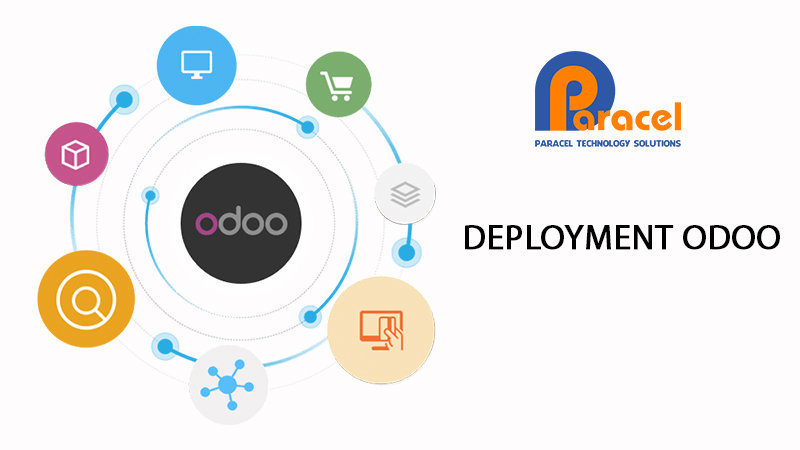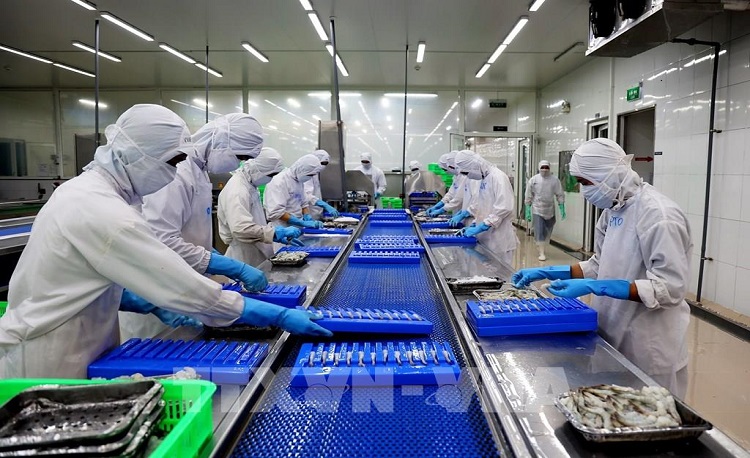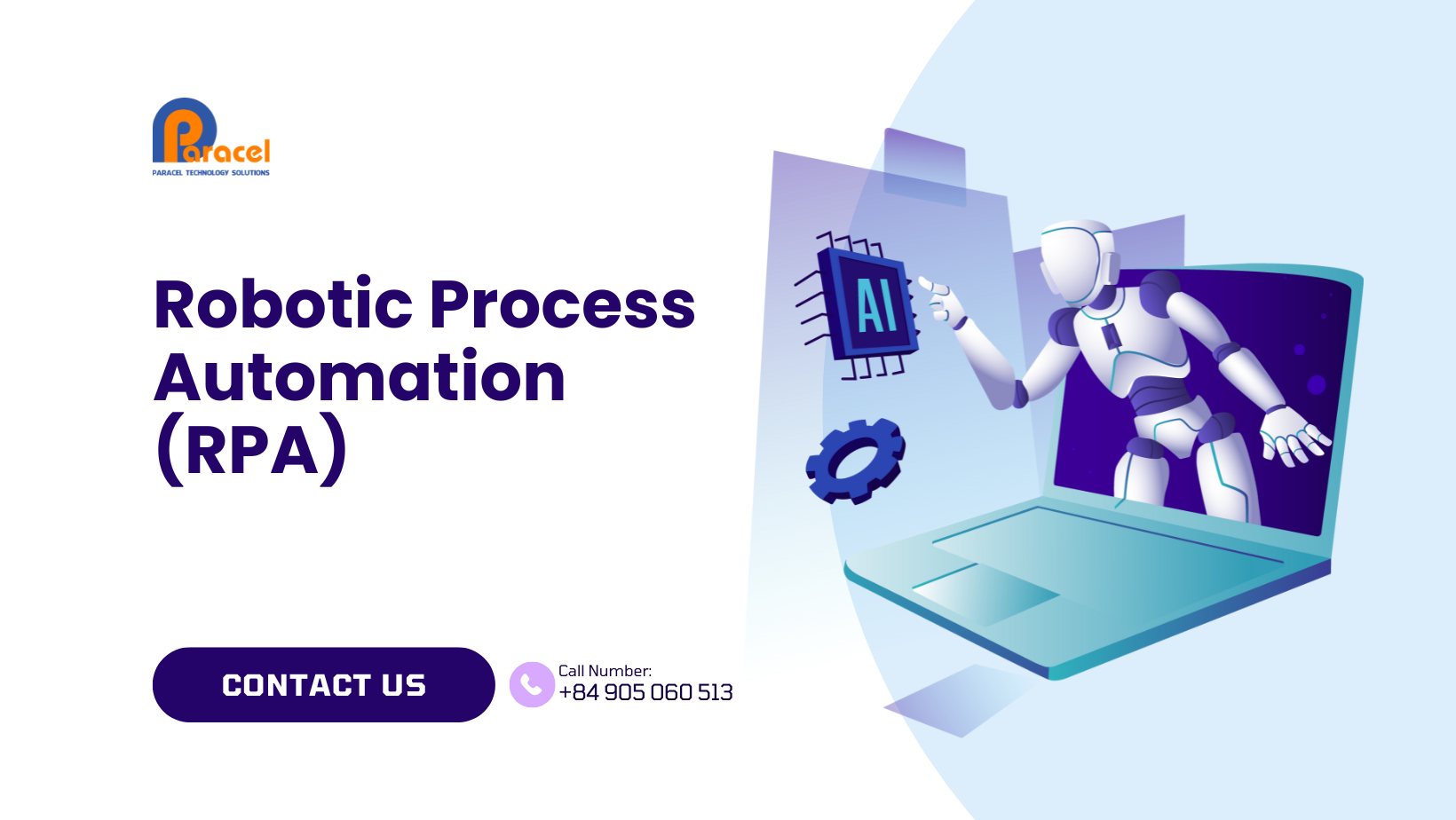Deploying a comprehensive operational solution system based on a new model, such as Odoo, can pose a challenge for any organization. However, with the right approach and application of appropriate methods, this process can be carried out smoothly, bringing significant benefits to your business.

From evaluating specific business requirements to conducting testing and training, we will address the crucial steps to ensure the success of your Odoo deployment. Whether it’s a small or medium-sized enterprise or a large corporation, these best practices will support you throughout the deployment process and help you achieve sustainable success with Odoo.
WHAT IS ODOO?
Odoo is a comprehensive enterprise resource planning system designed to assist organizations in managing diverse business processes. It covers various functions, including sales management, accounting, inventory management, project management, and many others.
Utilizing the Python programming language, an efficient and advanced language, Odoo integrates PostgreSQL as its database management system, suitable for models that require handling large volumes of data. This system comprises multiple modules that can be adjusted to meet the specific characteristics of a business.
Odoo provides an online user interface that does not require installation, simplifying the usage process for all users. This has made Odoo a popular choice for a variety of businesses, from small to large, thanks to its flexibility and customization capabilities.
KEY BENEFITS OF ODOO
Odoo offers numerous advantages when used as an ERP solution for your business, including the following key benefits:
- High Customization Capability: Odoo allows businesses to easily adjust the software to reflect their specific needs and processes thanks to its high customization capability.
- Scalability: The flexibility of Odoo enables usage by small startups to large enterprises, and it can easily scale to meet growth demands.
- Flexible Integration: Odoo seamlessly integrates with various types of business software such as accounting systems and e-commerce platforms, optimizing processes and enhancing efficiency.
- Cost Savings: The Odoo system charges based on the number of users and is free for the entire core system. This significantly reduces costs and facilitates easy expansion of the deployment scope in a short time.
- User-Friendly Interface: With a user-friendly interface, Odoo enables both technical and non-technical users to operate and use the software effortlessly, including web and mobile versions.
- Time Savings: Odoo automates many business processes, such as accounting and inventory management, saving time and resources for businesses.
- Flexibility: With access from anywhere, Odoo, based on a web platform, facilitates remote work.
- Comprehensive: Odoo provides various modules to manage different business processes such as accounting, inventory, project management, etc.
These outstanding benefits make Odoo suitable for diverse businesses at every stage of development. For just $1000, Paracel will accompany you in deploying and integrating modules to meet basic requirements on Odoo.
EFFICIENT ODOO DEPLOYMENT METHOD
The Odoo deployment process is divided into three main stages, including:
- Objective Finalization Survey:
- Requirement Gathering: This stage focuses on collecting detailed information about the specific requirements of the business, desired features, and available resources.
- Identify Stakeholders: Clearly define direct stakeholders, team members, and decision-makers to establish strong collaboration.
- Project Planning: Collaborate closely with the consulting unit to outline a detailed project plan, including specific steps and set goals.
- Odoo Deployment:
- Installation and Configuration: Start by installing and customizing Odoo according to the specific requirements of the business, ensuring compatibility and optimal performance.
- Data Migration and Testing: If necessary, migrate data from old systems to Odoo, then test the system to ensure accuracy and smooth operation.
- User Training: Organize quality training sessions to ensure that employees have a deep understanding of how to effectively use Odoo.
- Support:
- Regular Update Delivery: Ensure system maintenance by providing regular updates with new features and bug fixes.
- Issue Resolution: Provide continuous support in resolving any technical issues or emerging problems.
- Address Concerns: Focus on user feedback and address concerns to ensure satisfaction and continuous effectiveness.
In this way, each stage of the Odoo deployment process is carried out in a detailed and organized manner, creating an ERP system that fully meets the needs and criteria of the business.
PROJECT SURVEY AND OBJECTIVE DETERMINATION FOR ODOO DEPLOYMENT
This stage focuses on initiating the project, where all team members collectively establish the direction and working methods. Paracel takes on the role of a consultant, guiding the client in defining the vision and goals, while clearly outlining the overall scope of the Odoo project and efficiently distributing resources.
Based on time, budget, leadership goals, and default features of Odoo, we propose the most suitable options to ensure the project is quickly operational at each stage. This helps optimize the business’s investment resources, creating added value in the business operation chain.
Main Objectives:
- Readiness to Deploy the MVP Version with identified solutions and features.
- Build a Strategy for the Deployment Phase, including a roadmap and specific commitments.
Key Tasks and Activities:
- Identify Business Goals and Necessary Improvements.
- Delve into the Customer’s Structure & Processes.
- Identify Processes, Functional Overviews, and Related Constraint Requirements.
- Understand Processes for Digitization/Automation or Improvement Based on Processes.
- Identify & Verify Requirements, Determine Solution Options, Build Proof of Concept (POC) System.
- Build a Strategy for the Implementation Phase.
- Identify and Prepare Cross-Linked Requirement Scope for the Entire Project.
- Determine Priorities, Dependencies, Conversion Roadmap & General Project Rules for the Deployment Phase.
- Define Scope for the MVP Version – Based on Set Requirements.
- Define Scope for the First Golive, List Specific Criteria Addressed in the Deployment Documentation.
- Identify the Project Team as Key Personnel Involved in the Project.
- Approve and Confirm Requirements.
- Organize Demo Workshops and Evaluation: Paracel conducts a system demo session using the client’s real data, highlighting how Odoo handles critical processes. This demo allows the client to directly experience Odoo’s capabilities for their specific requirements. Features and functionalities are reviewed, strengths and capabilities are assessed, and necessary adjustments are noted.
We are ready to address any concerns or questions that the client may have during and after the demo or POC.
PROJECT SURVEY AND OBJECTIVE SETTING
This stage is designed to kickstart the project, where all team members come together to define tasks and working methods. In this phase, Paracel takes on the role of a consultant, assisting in determining the client’s vision and goals, as well as the overall scope of the Odoo project and efficiently allocating resources.
Based on time, budget, leadership goals, and Odoo’s default features, we propose the most suitable options to ensure the project can be quickly deployed in stages. This helps optimize the business’s investment value and actively contributes to the business operation chain.
Main Objectives:
- Readiness for the Deployment Phase of the MVP Version with identified solutions and features.
- Develop a Strategy for the Deployment Phase with a roadmap and specific commitments.
Key Tasks and Activities:
- Identify Business Goals, Needs, and Necessary Improvements to Apply the System.
- Deep Dive into the Structure & Processes of the Client’s Company.
- Identify and Prepare Cross-Linked Requirement Scope for the Entire Project
- Recognize Processes, Functional Overviews, and Related Constraint Requirements.
- Understand Processes that can be Digitized/Automated or Processes that Need Improvement, while Clearly Defining MVP based on these Processes.
- Identify & Verify Requirements, Determine Solution Options, and Build Proof of Concept (POC) System.
- Develop a Strategy for the Implementation Phase.
- Identify and Prepare Cross-Linked Requirement Scope for the Entire Project.
- Determine Priorities, Dependencies, Conversion Roadmap & General Project Rules for the Deployment Phase.
- Define Scope for the MVP Version – Based on Set Requirements.
- Define Scope for the First Golive, Listing Specific Criteria Addressed in the Deployment Documentation.
- Identify the Project Team as Key Personnel Involved in the Project.
- Approve and Confirm Requirements.
Organize Workshop Demo and Evaluation: Paracel will organize a system demo session using real data from the client to showcase how Odoo handles critical processes. This demo allows clients to directly experience Odoo’s capabilities for their specific requirements. Features and functionalities will be reviewed, strengths and system capabilities will be assessed, along with noting necessary adjustments.
We are also ready to address any concerns or questions that clients may have before, during, and after the demo or POC.
DEPLOYMENT PHASE
The primary objective of this phase is to provide the best solution based on the requirements identified during the survey and objective-setting stage. To ensure focus, the project scope is tightly related to the company’s key performance indicators, concentrating efforts on this scope can help minimize requirement changes and achieve objectives more quickly.
Now, let’s delve into the deployment process of Odoo.
Note: The process described below is comprehensive and standard, requiring thorough resource and budget planning, typically applicable to projects involving custom programming over an extended period. For projects focusing on leveraging Odoo’s existing features (e.g., [example]), Paracel and the client can mutually agree to streamline the phase to reduce costs, with the primary goal of achieving functional readiness within the specified requirements.
Definition Phase
For large and complex projects, having a dedicated Core Team to manage the project, ensuring overall innovation, and having functional teams for specific functions, systems, or technologies may be necessary. However, for smaller projects, a Project Team might be sufficient. This approach helps ensure effective project management while ensuring appropriate professionalism for each aspect of the project.
Core Team’s Main Tasks:
- Define Scope for Upcoming Updates and Short-Term Goals.
- Identify Priorities and Dependency Requirements.
- Describe Features and Requirements.
- Identify Project Teams to Implement Features.
- Identify Responsible Parties for Features and All Related Stakeholders.
Project Team’s Main Tasks:
- Contribute Insights into the Plan and Priorities, Provide Expert Options, Identify Dependencies, and Discuss Solutions.
- Analyze Features and Break Them Down by Outstanding Tasks, Describe Requirements, and Communicate with All Stakeholders.
- Prioritize Outstanding Tasks.
- Plan Iterations Based on Priorities and Dependencies.
- Communicate Features and Tasks of the Team to the Project Team.
BUILD PHASE
This phase focuses on evaluating and addressing any outstanding requirements, shaping additional requirements, developing, and testing features. The bug-fixing team carries out a testing step before the features are introduced to the official version.
Below is a detailed description of the Project Team’s process:
- Customer Requirement Evaluation (Backlog):
- Review current customer requirements.
- Business Analysis and Formulation of Requirements (Analysis):
- Conduct business analysis, discuss with the customer, and clarify new requirements.
- Team Requirement Analysis (BA, QA, Developers):
- Ensure consistent understanding of requirements among team members.
- Description of Requirements (Google Docs) and Task Linking (To-Do):
- Create detailed descriptions of requirements and link them to specific tasks.
- Environment Setup, Configuration, Development, Feature Recording (Customizing):
- Prepare the environment, configure the system, develop features, and record clips to ensure effective features from the user’s perspective.
- Testing and Review Feature Functionality (Review):
- Conduct testing, and the testing team records clips to demonstrate that the features operate as expected.
- Issue Analysis, Discussion, Bug Fixing (Analysis → To-Do → In Progress):
- Identify and fix issues arising during testing.
- Final Testing (Review):
- Conduct final testing before moving on to the deployment step.
- User Acceptance Testing (Ready for Deployment):
- Prepare and conduct user acceptance testing to ensure feature readiness for official release.
- Implementation, Deployment to Official Version:
- Implement the deployment process and introduce the features to the official version.
- Support (Completion):
- Provide support and monitor post-deployment, ensuring stability and readiness for use.
CUSTOM FEATURE DEVELOPMENT METHOD
The Odoo deployment process comprises five main steps: planning, development, testing, deployment, and monitoring. All new features, whether minor bug fixes or entire modules, must go through multiple stages, such as the Odoo deployment environment.
Only when a feature has been thoroughly tested in the current stage can we move on to the next stage. The deployment of features for official use (Production) is carried out by creating requests on GitHub.
GO-LIVE
The Go-live process requires meticulous preparation, including a series of steps and checklists, to ensure that the entire project team on both sides adheres fully from the deployment step, ensuring a successful Go-live process.
POST-DEPLOYMENT SUPPORT
The Odoo system deployment is just one part of the entire process. Immediately after the official launch of the project, the system enters the support phase. During this phase, rapid support and bug fixing take top priority, while also providing an opportunity for crucial feedback to develop new features.
In all support stages, it is crucial to ensure that the development team consistently responds and pays attention to end-user needs, maintaining standardized management principles and avoiding interference with the core system logic without consideration, to ensure the success and efficiency of the project.
The support package typically includes around 50 hours per month (however, this number may vary depending on project requirements) and involves tasks such as maintaining system functionality and stability, resolving any arising issues or errors, as well as providing guidance and system upgrades.
Note: In most cases, the project does not conclude immediately after going live. Businesses continually have new requirements and processes to optimize automation, so the post-deployment phase is related to continuous development of new features and improvements. This cycle extends as long as you use Odoo to operate your business.
Summary
Implementing Odoo, like many other software solutions, requires a complex and challenging process. However, three crucial principles can guide any company toward a more effective deployment process and increase the likelihood of success:
- Planning and Specific Requirement Definition: Planning and clearly defining requirements from the survey and goal-setting stage can shape the deployment process smoothly and efficiently.
- Maintaining the Defined Scope Focus: Focusing on maintaining the project scope, as defined during the survey stage, can help achieve goals and business metrics, resulting in a quicker return on investment (ROI). This is more effective than trying to achieve all goals in a short timeframe without feasibility.
- Choosing an Experienced Odoo Partner: Selecting an experienced Odoo partner is crucial to ensure that the outcomes of the digital transformation process align with the company’s goals and budget.
At Paracel, our team of experts is committed to providing transparent solutions with customers at the center, meeting the unique needs of each business.
If you are ready to embark on a digital business transformation project based on Odoo, we are ready to listen and discuss your company’s requirements today.



